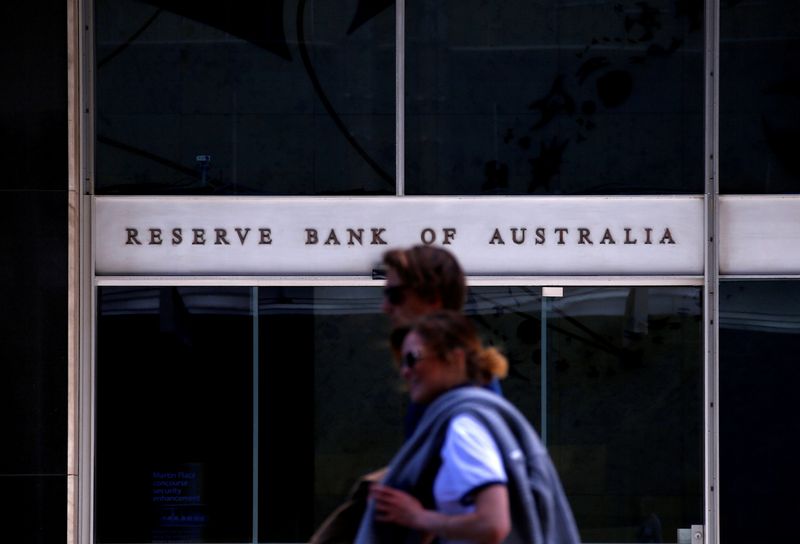SYDNEY (Reuters) -Australia's central bank on Tuesday ruled out the possibility of an interest rate cut this year, saying core inflation is expected to come down only slowly, after it held interest rates steady for a sixth straight meeting.
The Australian dollar firmed 0.3% to $0.6517 and three-year bond futures extended declines to be off 29 ticks to 96.4, as markets pared back the chance of a November rate cut to 55% from 88% before the policy decision on the unexpectedly hawkish messaging, although they are still fully priced for a cut by December.
Wrapping up its August policy meeting, the Reserve Bank of Australia (RBA) kept rates at a 12-year high of 4.35% and said policy would have to be sufficiently restrictive to ensure inflation returned to target.
It reiterated it is not ruling anything in or out on policy.
Markets had wagered heavily on a steady outcome given core inflation had cooled as hoped in the second quarter, while recent wild swings in global markets argued for a more cautious stance. [AU/INT]
In unusually blunt remarks after the decision, RBA Governor Michele Bullock said the bank's board had discussed raising rates at the meeting, but decided policy was in the right place for the time being. She emphasised markets had got ahead of themselves in pricing in rate cuts for as early as November.
"Based on what I know today, based on what the board knows today, what we can say is that a near-term reduction in the cash rate is not aligned with the board's current thinking," said Bullock.
"What we really need to see is the underlying pulse of inflation to start to come down further, because the longer inflation remains elevated, the more it hurts everyone."
The RBA has raised interest rates by 425 basis points (bps)since May 2022, but with inflation - which ran at 3.8% last quarter - still above the central bank's target band of 2-3%, policymakers pondered whether the current policy was restrictive enough.
Underlying inflation remained high at 3.9% last quarter and is now expected to slow more gradually than previously thought, the central bank said on Tuesday. However, headline inflation is projected to dip back into the target band early next year thanks to the government's energy rebates.
"At the risk of reading too much into the RBA’s words, if anything we’d view it as more hawkish than June and May," said Adam Boyton, head of Australian economics at ANZ, adding that he expects the first cut will come in February next year.
"Given the tone of today’s statement, a rate cut this year would most likely require a much more rapid deterioration across the activity side than we expect."
The RBA already trails other central banks in cutting interest rates. The Federal Reserve is almost certain to cut rates in September, while the European Central Bank and the Bank of England have already eased policy.

Bullock also said policymakers were watching the recent volatility in the market, but it did not factor in the rate decision.
"Policy will need to be sufficiently restrictive until the Board is confident that inflation is moving sustainably towards the target range," said the RBA in its post-decision statement.